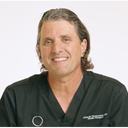What is the best long-term solution for bigger lips? What are the pros and cons of using Alloderm?
Answers (10)
From board-certified doctors and trusted medical professionals
Dr. Raffy Karamanoukian, MD, FACS

Dr. Raffy Karamanoukian, MD, FACS
Board Certified Plastic Surgeon
Answer
Dr. S. Larry Schlesinger, MD, FACS

Dr. S. Larry Schlesinger, MD, FACS
Board Certified Plastic Surgeon
Answer
Dr. Lawrence Kass, MD

Dr. Lawrence Kass, MD
Oculoplastic Surgeon, Board Certified in Ophthalmology
Answer
Dr. John Michael Thomassen, MD

Dr. John Michael Thomassen, MD
Board Certified Plastic Surgeon
Answer
Dr. Michael McClure, MD
Dr. Michael McClure, MD
Board Certified Plastic Surgeon
Answer
Dr. Raj S. Ambay, MD

Dr. Raj S. Ambay, MD
Board Certified Plastic Surgeon
Answer
Dr. Daniel Shapiro, MD
Dr. Daniel Shapiro, MD
Board Certified Plastic Surgeon
Answer
Dr. Erez Sternberg, MD
Dr. Erez Sternberg, MD
Board Certified Plastic Surgeon
Answer
Dr. James Fernau, MD, FACS - Account Suspended
Dr. James Fernau, MD, FACS - Account Suspended
Board Certified Plastic Surgeon
Answer
Dr. Francis R. Palmer, III, MD (retired)
Dr. Francis R. Palmer, III, MD (retired)
Board Certified Facial Plastic Surgeon
Answer
More AlloDerm Questions
See all AlloDerm Q&AWE SEND PRETTY
EMAILS
What’s trending? Who’s turning heads? Which TikTok myths need busting? We’ve got you. No fluff, no gatekeeping—just real talk. Get our free, unfiltered newsletter.